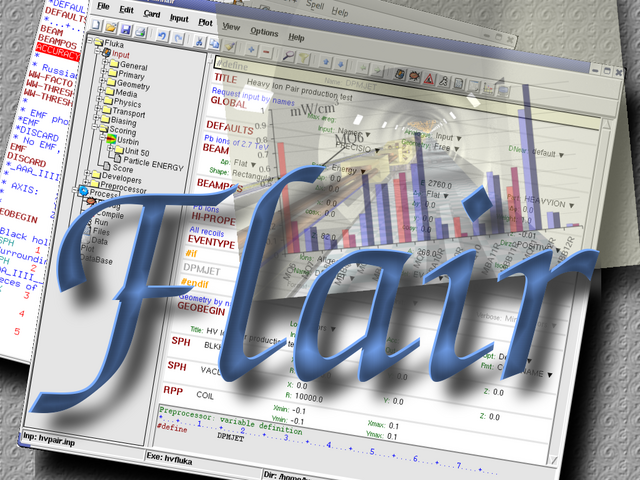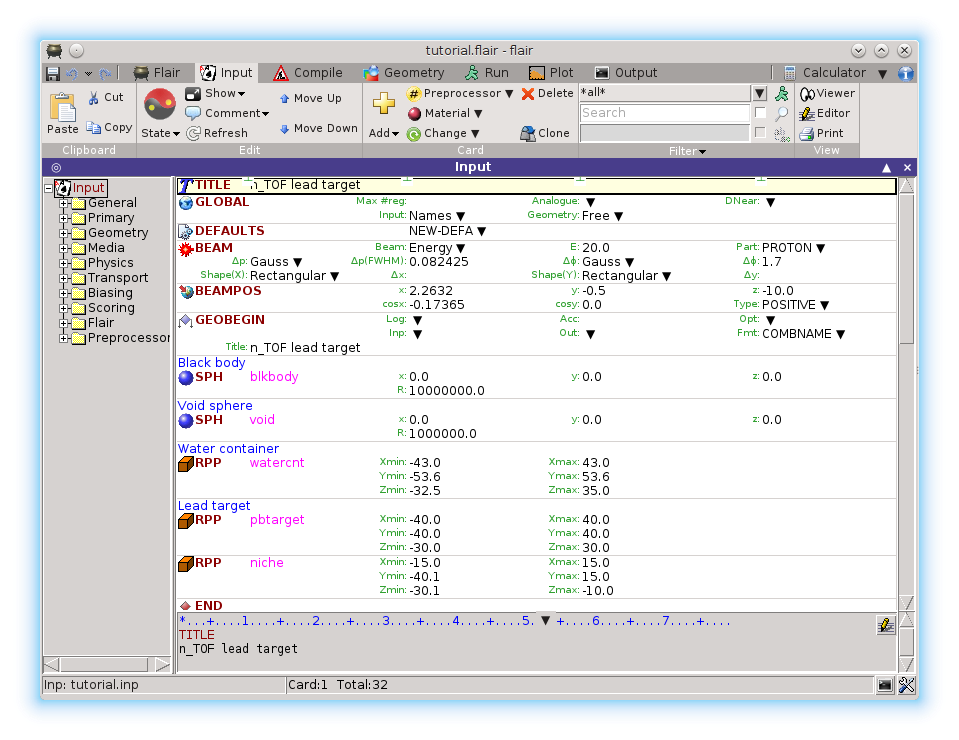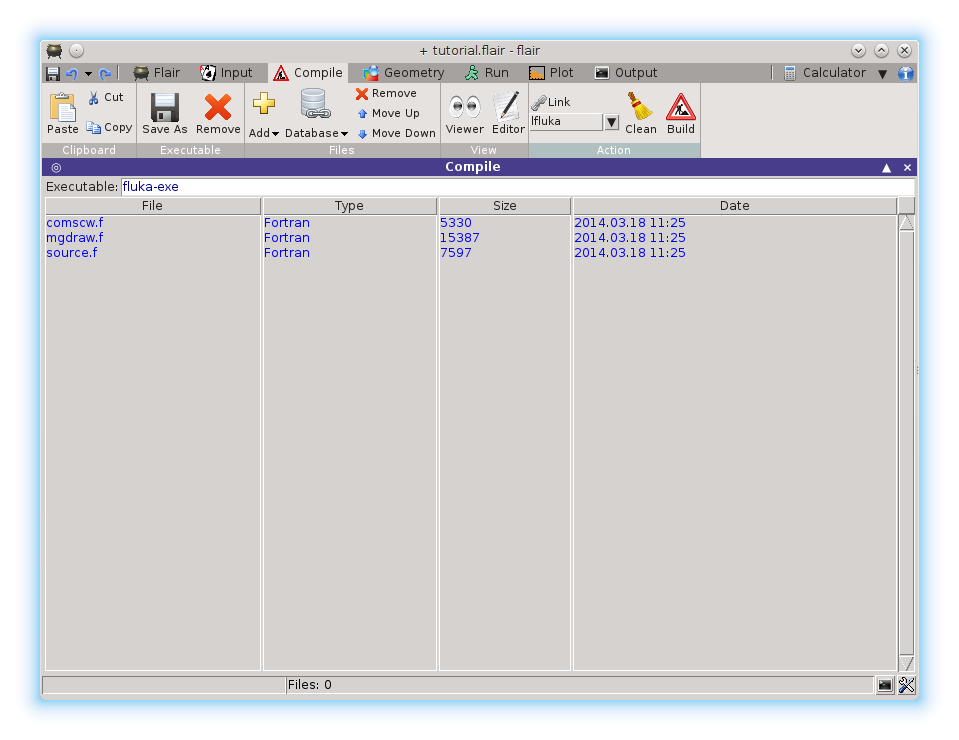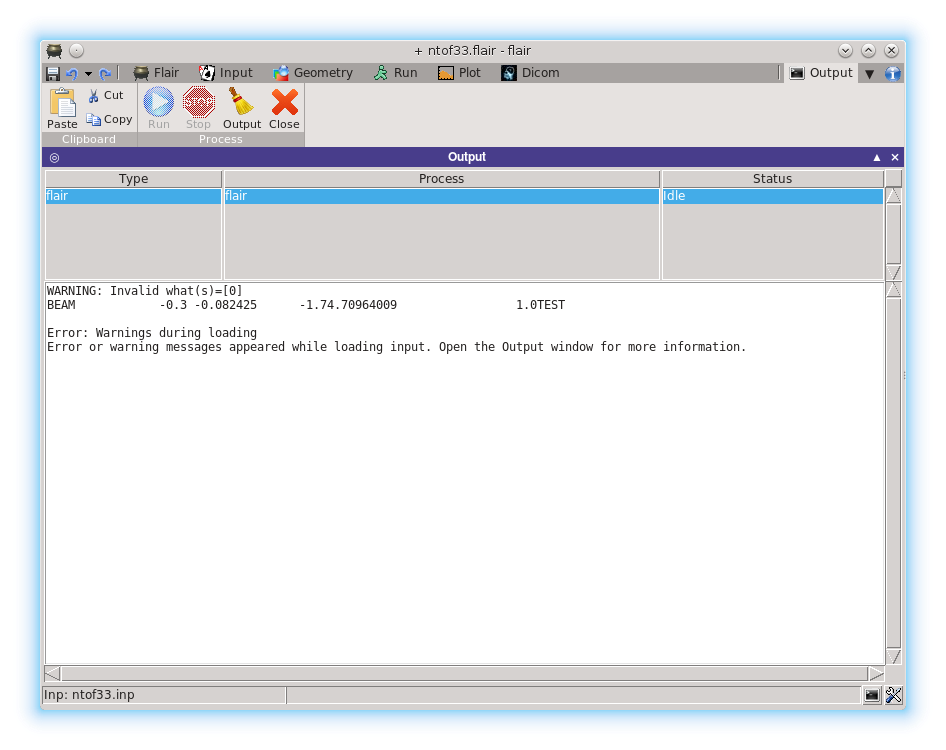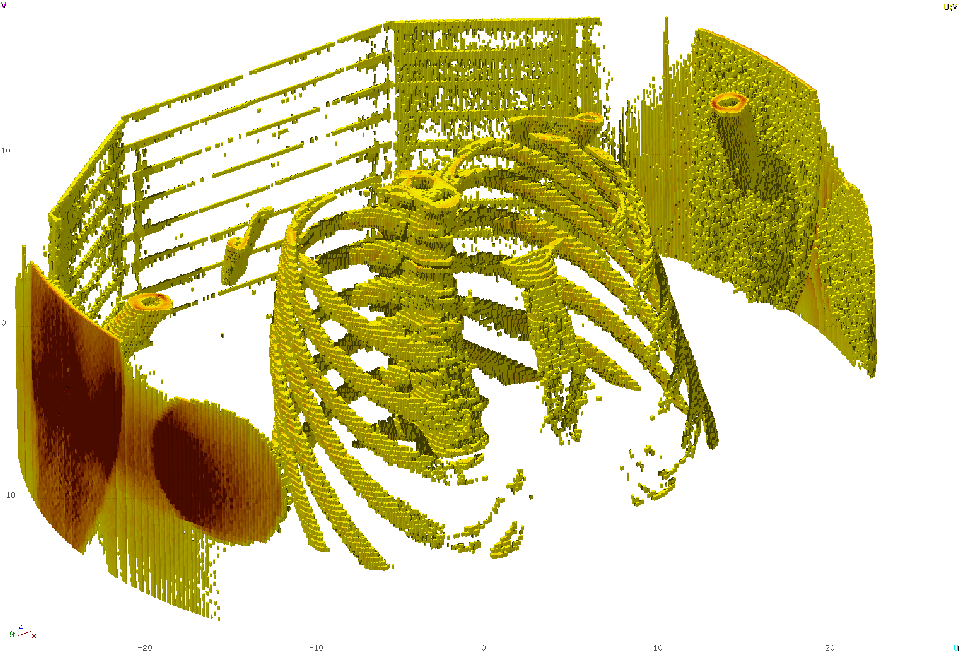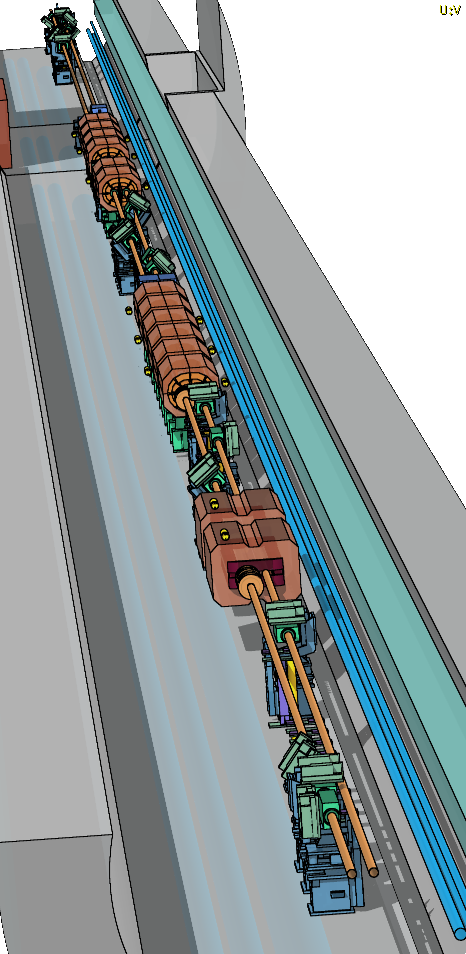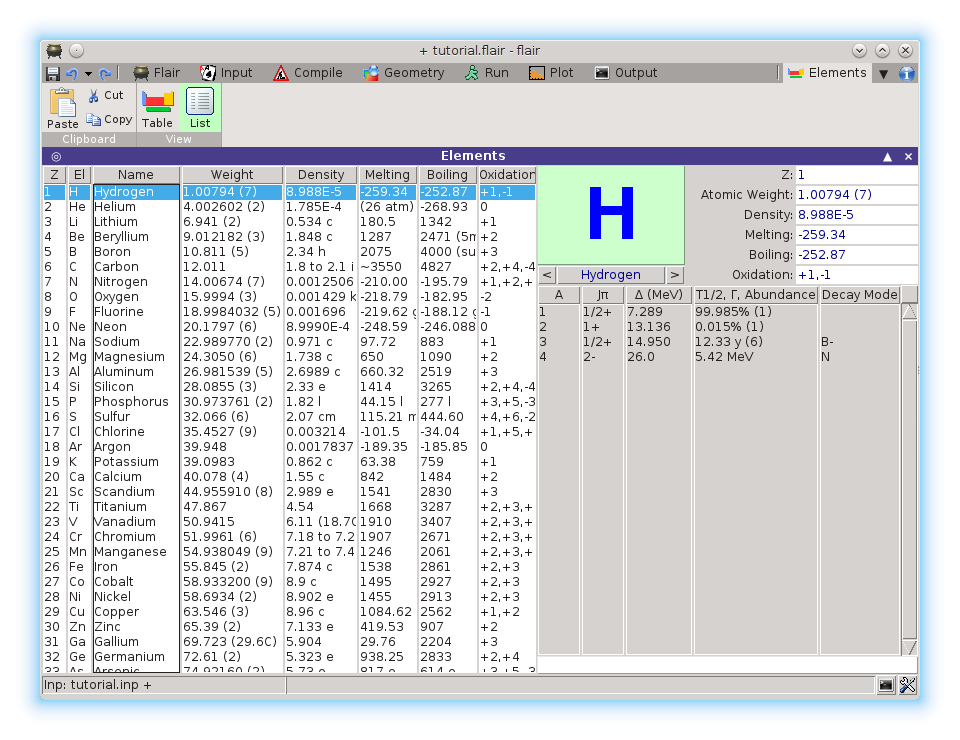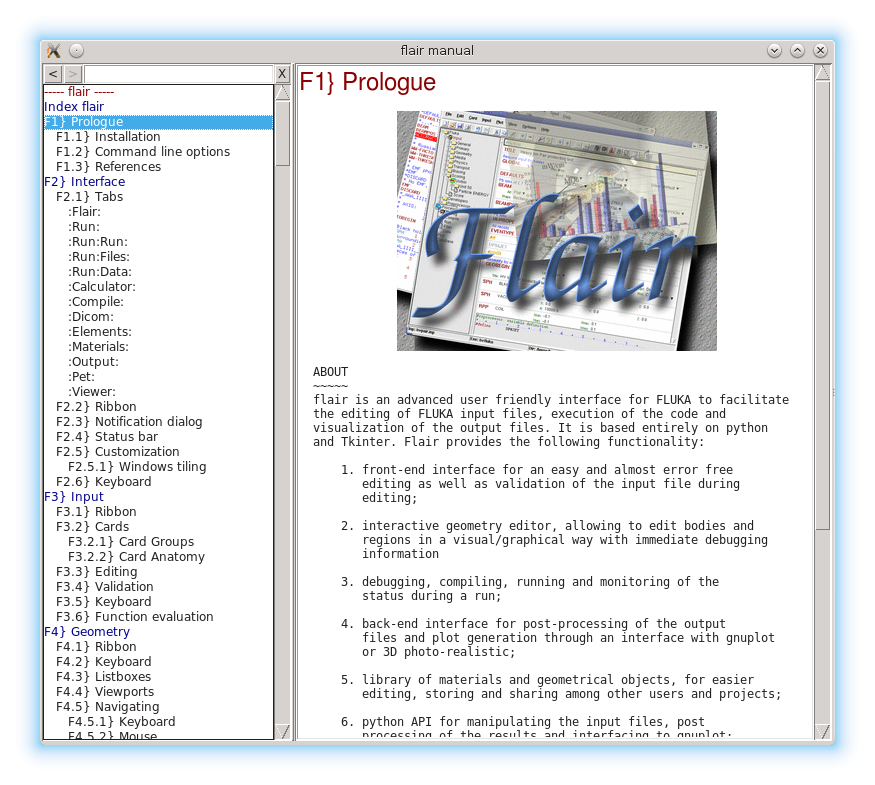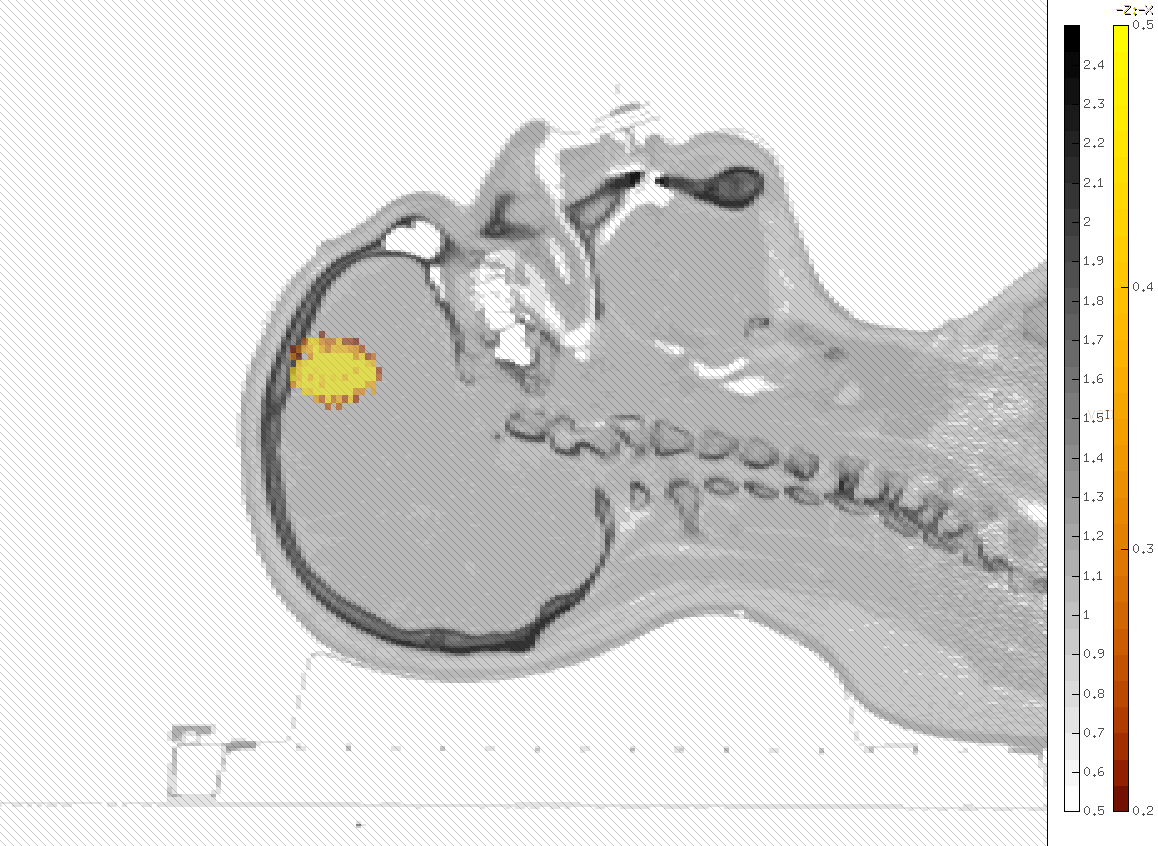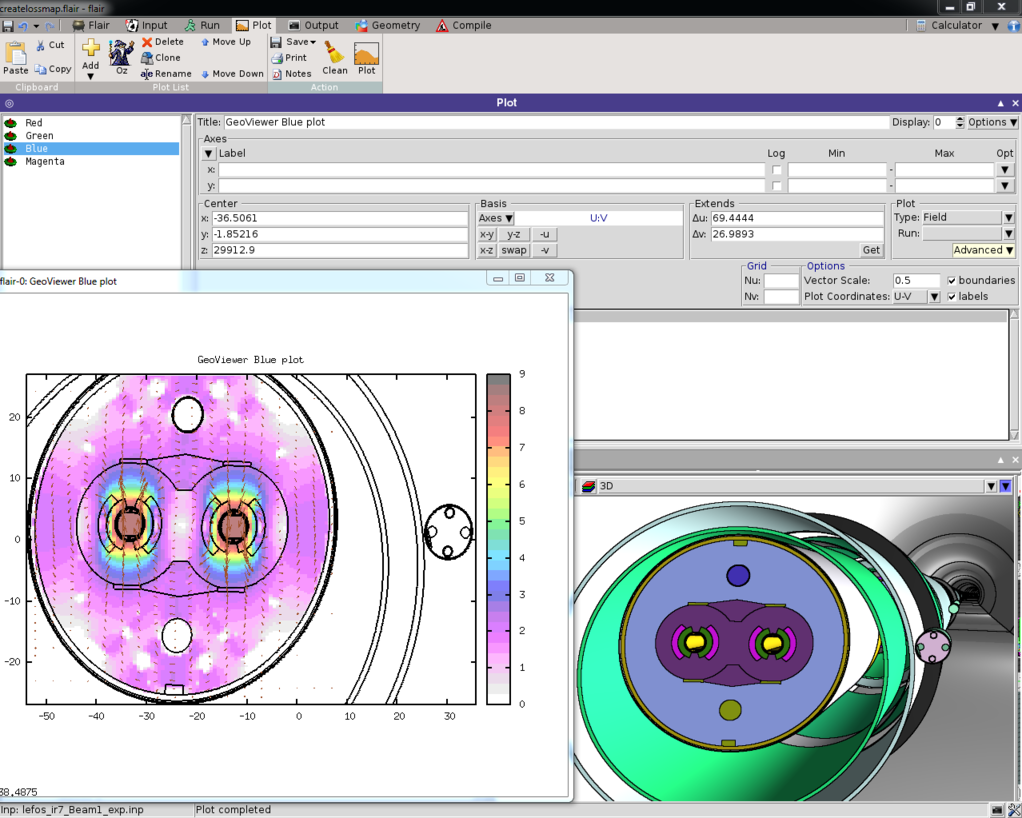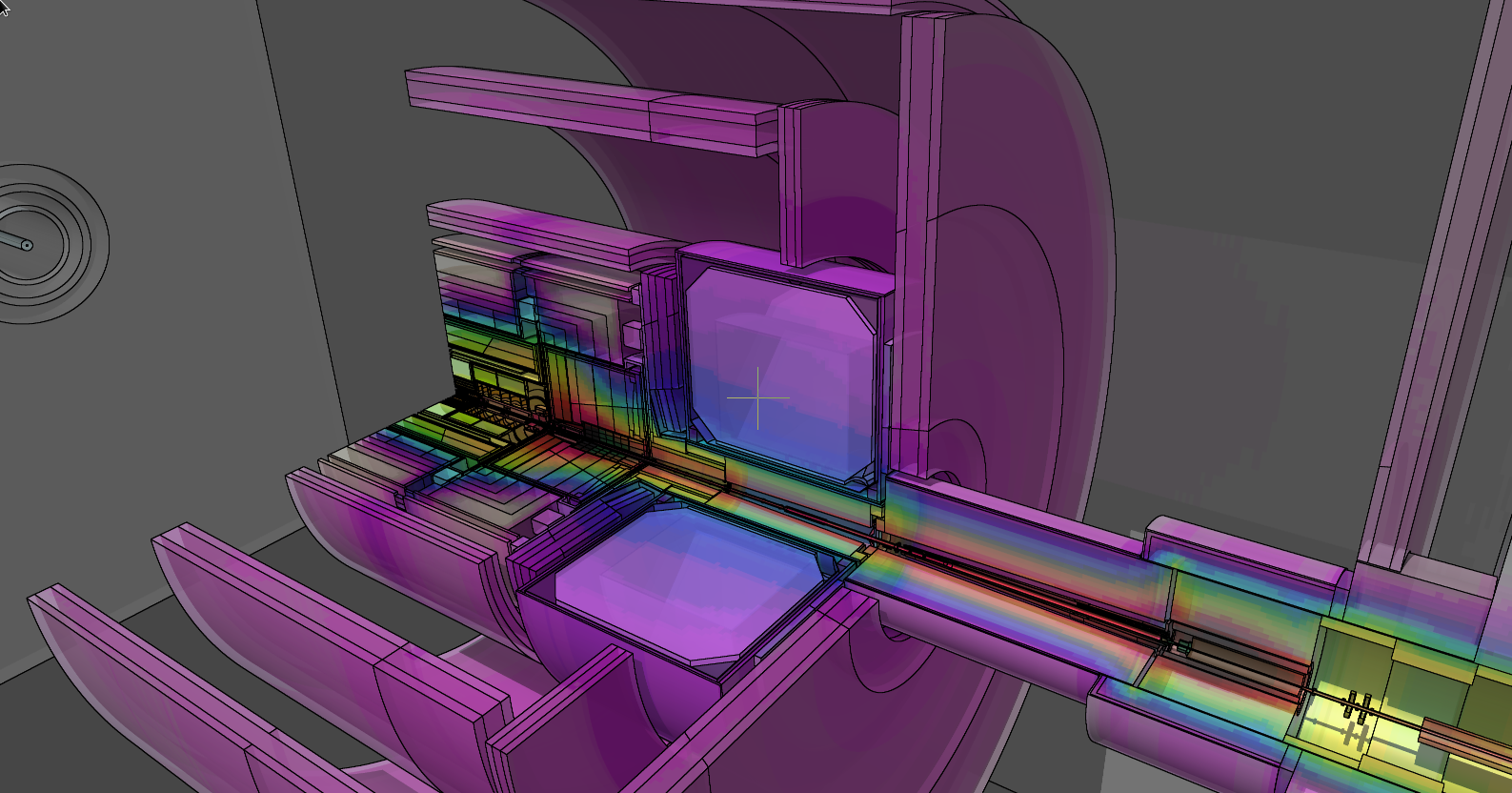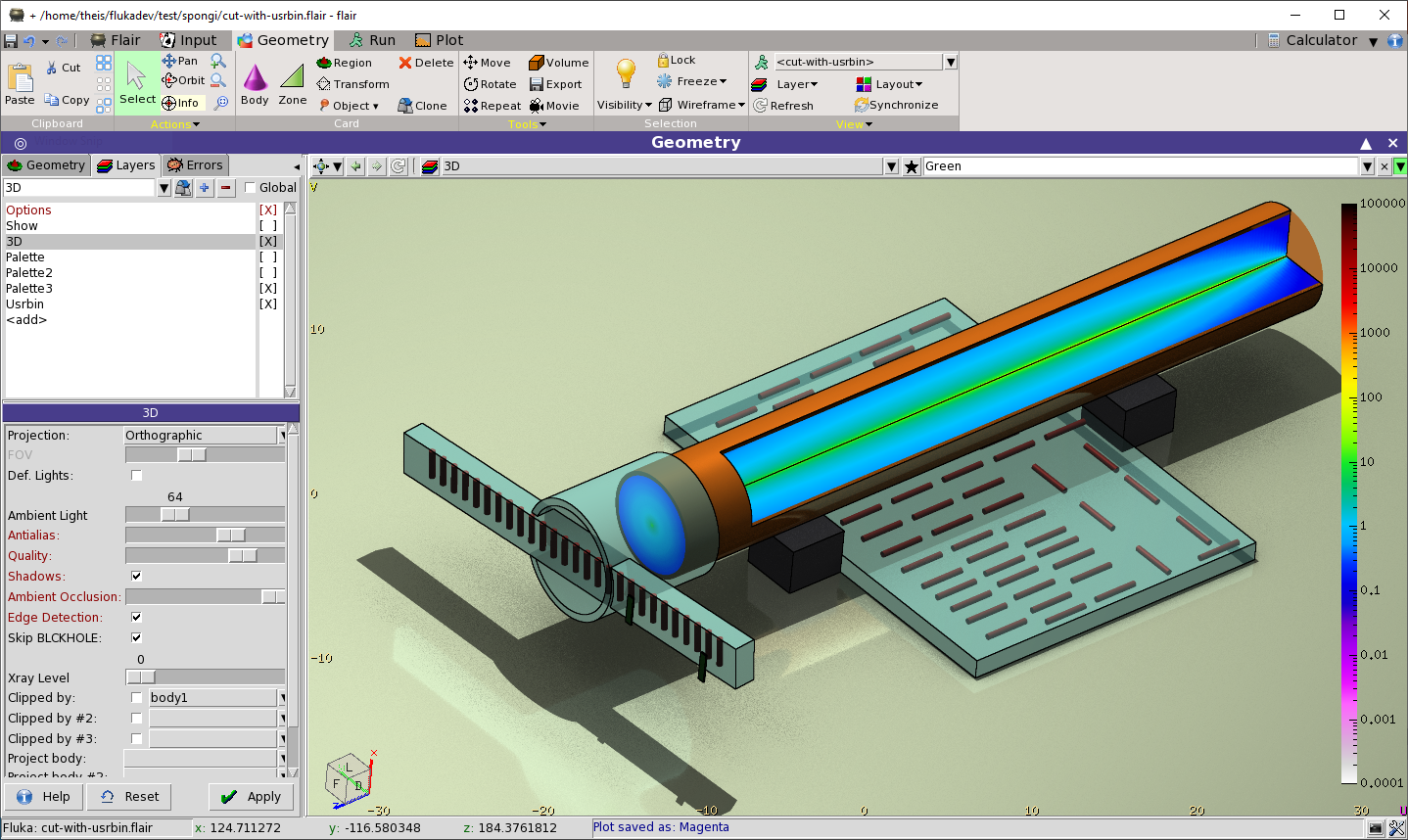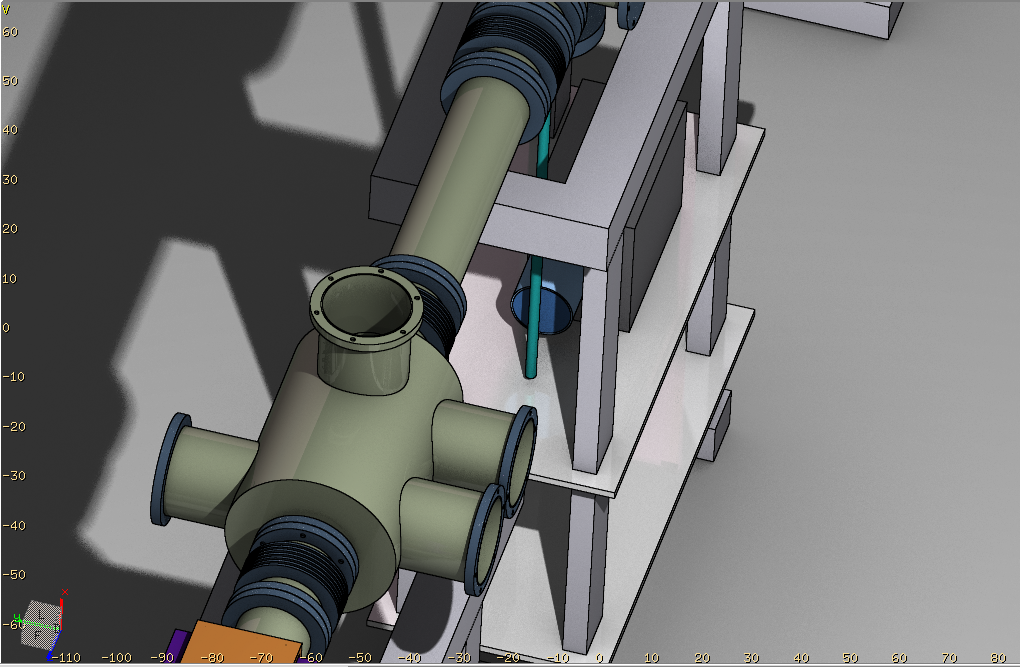About
| /fleə(r)/ | n [U,C] natural or instinctive ability to do something well, to select or recognize what is best, more useful, etc. |
flair is an advanced user friendly interface for several Monte Carlo codes. Originally it was developed for FLUKA, where its unique features strongly contributed to the success of both codes FLUKA and flair. From version 3 the interface was separated from the functionality permitting an easy integration of other simulation packages.
The current line of development is to make flair a unique tool for performing calculations with the same input using FLUKA, Geant4, PENELOPE, and other simulations engines.
Presently is fully supporting the CERN FLUKA version and there is ongoing work to support:- Moira a Geant4 based application, permitting the user to run with Geant4 FLUKA equivalent inputs with the same geometry, materials, scoring,...
Changelog *most* important changes
Version 3.1
Version 3.1 feature a lot of changes targeted mainly for medical applications:- DICOM handling improvements:
- DICOM interface changed, simplified and enhanced in functionality
- New DICOM editor to perform simple changes like anonymizing of DICOM files
- Voxel generation can override the material on ROIs performing boolean operations like in the geometry
- Enhanced RTViewer for cross checking calculations vs RTPLAN
- RTPLAN processing to create the necessary beams for both Ion and PHOTON plan
- Convert USRBIN to RTDOSE DICOM format
- Automatic export to DVH both of RTDOSE and USRBIN's
- Geometry Editor
- FARM inclusion: Flair Advanced Render module (C.Theis) a high performance 3D renderer for generating high quality photorealistic 3D geometry plots directly in the geometry editor, comparable to the best 3D renders.
- Planner tool: creation of RP intervention planning and dose estimation directly in the geometry editor, along a time spline path, assuming a point operator
- Movie tool: creation of 3D movies with the use of a camera moving along a time-spline path
- Advanced parenthesis expansion with online-optimization of unwanted zones Far more performant with the past and with the in-built fluka one.
- Multiple orientation systems:
- X-up
- Y-up (default of flair)
- Z-up
- DICOM biped
- DICOM quadruped
- Input Editor - considerable speed up for undo/redo actions
Version 3
- WEBSITE Change, From December 1st 2019 the official web site of
flair is
http://cern.ch/flair Support to the www.fluka.org is discontinued. - Flair v3 is being completly restructured and based on python v3. Previous versions of flair (until v2.5) were based on Python v2. On January 1 2020, python v2 will no longer be supported by its creators and all major Linux distributions are already moving away from it.
- From v3 the master input file for flair is the ".flair" project file (no longer the ".inp"). i.e. the whole FLUKA input file is stored in the ".flair" file in an text human readable way.
- Input Editor is now based on a Text widget and no longer on the Canvas. This gives more flexibility to operate as a text-editor, with considerable improvement in performance. (i.e. a huge input file of 25000+ cards was taking almost 20s in the past to be displayed in the input editor, now on the same computer it takes less than 3s.)
- The geometry engine is restructured to allow its use as a geometry navigator for simulation programs, allowing the easy integration of the present FLUKA input geometries in Geant4.
- There are numerous improvements in the geometry engine for a better user experience, i.e. more logical error checks, 3D plots are enhanced with ambient occlusion for photorealistic shadows, and faster adaptive antialiasing and edge detection.
 flair
flair